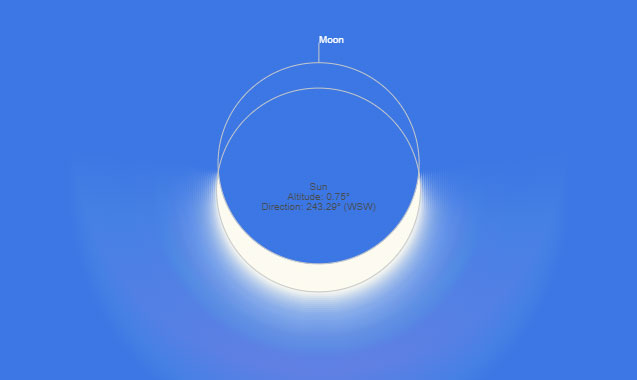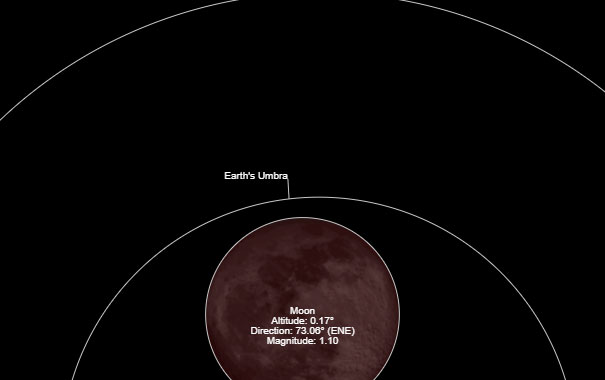Both lunar eclipses will be blood moons, meaning they are total lunar eclipses, while the solar eclipse will be a partial solar eclipse.
1. “Antarctic Solar Eclipse” in April
On April 30th, a partial solar eclipse will be visible in the southern regions of South America, parts of Antarctica, the Pacific Ocean, and the Atlantic Ocean. Thus, most of the observation areas are located in uninhabited regions of the world.
During this solar eclipse, the moon will only “cover” a small portion of the Sun, and even at the peak stage, the coverage will be less than 40%.
2. “Flower Blood Moon” in May
This total lunar eclipse will be visible in North and South America, Europe, Africa, parts of Western Asia, and some ocean areas surrounding these continents.
The “peak” stage of the lunar eclipse will occur at 4:11 AM UTC on May 16th, which corresponds to 11:11 AM Vietnam time, meaning that we will not be able to observe it.
3. “Crescent of Light” in October

October Solar Eclipse at its peak – (Photo: Time and Date).
A partial solar eclipse occurring on October 25th will be visible in Europe, North Africa, the Middle East, and Western Asia. The coverage of this eclipse is very high; at the peak stage, the Sun will appear as a thin crescent of light.
4. “Frost Moon” turns into a Blood Moon, visible from Vietnam

Image depicting “frost blood moon” viewed from Ho Chi Minh City – (Photo: Time and Date)
At sunset on November 8th, Vietnamese people will have the opportunity to observe the “blood moon”, which is a total lunar eclipse, although our country is not the most favorable place for observation and will miss some phases of the eclipse.
The phenomenon will last for 3 hours and 33 minutes, starting at 5:22 PM (Vietnam time), reaching its peak at 5:59 PM, and ending at 8:56 PM. During the time from the start until 6:42 PM, the color red will cover the entire moon before gradually fading.
The best regions for observing the blood moon are the western parts of Canada and the United States, Northeast Asia, and most of the Pacific and Arctic Oceans.


















































